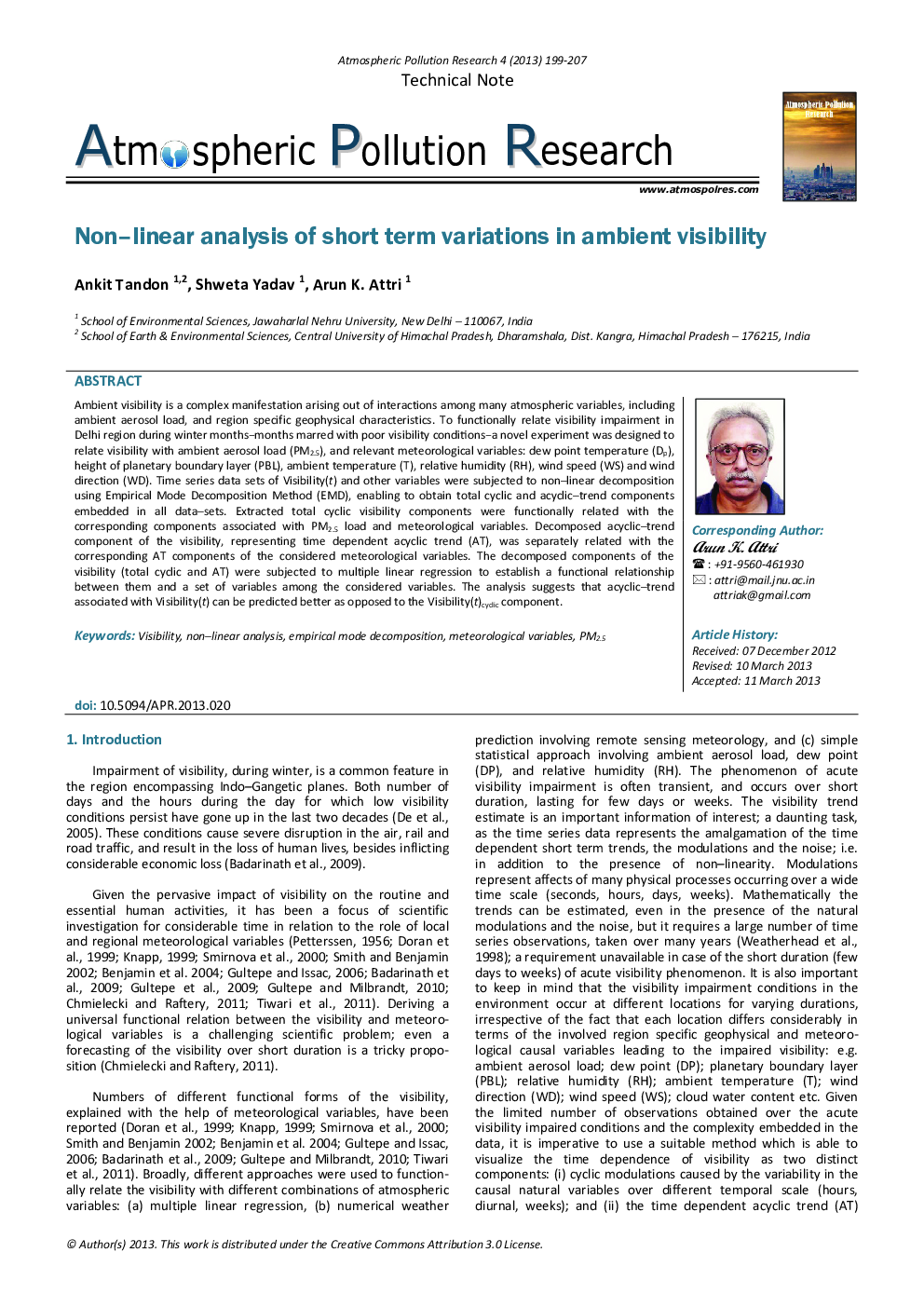| Article ID | Journal | Published Year | Pages | File Type |
|---|---|---|---|---|
| 4434637 | Atmospheric Pollution Research | 2013 | 9 Pages |
Ambient visibility is a complex manifestation arising out of interactions among many atmospheric variables, including ambient aerosol load, and region specific geophysical characteristics. To functionally relate visibility impairment in Delhi region during winter months-months marred with poor visibility conditions–a novel experiment was designed to relate visibility with ambient aerosol load (PM2.5), and relevant meteorological variables: dew point temperature (Dp), height of planetary boundary layer (PBL), ambient temperature (T), relative humidity (RH), wind speed (WS) and wind direction (WD). Time series data sets of Visibility(t) and other variables were subjected to non–linear decomposition using Empirical Mode Decomposition Method (EMD), enabling to obtain total cyclic and acyclic–trend components embedded in all data–sets. Extracted total cyclic visibility components were functionally related with the corresponding components associated with PM2.5 load and meteorological variables. Decomposed acyclic–trend component of the visibility, representing time dependent acyclic trend (AT), was separately related with the corresponding AT components of the considered meteorological variables. The decomposed components of the visibility (total cyclic and AT) were subjected to multiple linear regression to establish a functional relationship between them and a set of variables among the considered variables. The analysis suggests that acyclic–trend associated with Visibility(t) can be predicted better as opposed to the Visibility(t)cyclic component.
